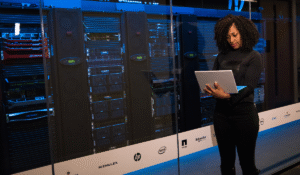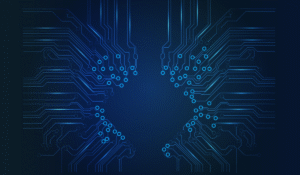As we move deeper into the decade, technological innovation shows no signs of slowing. The tech trends shaping 2025 are already redefining how we work, connect, and compete—but what comes next? As enterprises, governments, and consumers adapt to an increasingly digital-first world, anticipating the next wave of innovation is crucial.
This forward-looking watchlist explores the most promising and disruptive tech trends expected to gain momentum after 2025. These technologies—currently in development, early adoption, or experimental stages—have the potential to reshape entire industries and redefine our digital future.
1. General Artificial Intelligence (AGI)
While today’s AI systems are narrow and task-specific, the next frontier is Artificial General Intelligence (AGI)—machines capable of understanding and performing any cognitive task a human can do. Post-2025, major AI research labs and enterprises are accelerating efforts to develop AGI frameworks that are safer, more interpretable, and widely applicable.
Why It’s on the Watchlist:
- Potential to automate high-level decision-making
- Could revolutionize education, healthcare, legal analysis, and scientific research
- Raises ethical, economic, and regulatory concerns that must be addressed
Tech Trends Impact:
AGI could mark a turning point, leading to a new era of human-AI collaboration—or disruption.
2. Human Augmentation and Brain-Computer Interfaces (BCIs)
Emerging technologies such as neural implants and non-invasive BCIs are poised to redefine the relationship between humans and machines. Companies like Neuralink and startups worldwide are working on brain-tech interfaces to restore mobility, boost cognition, and even control devices with thought alone.
Future Applications:
- Rehabilitation for neurological disorders
- Seamless interaction with digital environments
- Mental health monitoring and enhancement
Tech Trends Insight:
By the late 2020s, BCIs may evolve from medical marvels into productivity tools for knowledge workers, gamers, and beyond.
3. Spatial Computing and Extended Reality (XR)
Post-2025, spatial computing—the ability to interact with digital data in 3D space—is expected to go mainstream. This includes the convergence of Augmented Reality (AR), Virtual Reality (VR), and Mixed Reality (MR) into unified Extended Reality (XR) platforms.
Use Cases on the Horizon:
- Immersive virtual offices and collaborative workspaces
- XR-based education and training
- Digital twin environments that mirror real-world operations
Tech Trends Forecast:
With Apple Vision Pro and Meta Quest laying the foundation, expect XR ecosystems to become business-critical platforms beyond 2025.
4. Fully Autonomous Supply Chains
Automation has already entered the warehouse and logistics sectors, but post-2025, the goal is full autonomy—from manufacturing to last-mile delivery. Leveraging AI, robotics, IoT, and 5G, enterprises are building self-regulating supply chains that can adapt in real-time.
Key Developments:
- AI-powered procurement systems
- Autonomous trucks and drones
- Predictive demand-sensing and auto-fulfillment
Tech Trends Watch:
Businesses will increasingly rely on autonomous logistics to maintain agility amid geopolitical and climate-related disruptions.
5. DNA Data Storage and Bioinformatics Breakthroughs
The explosion of digital data is pushing the limits of current storage solutions. Post-2025, DNA data storage—encoding digital information in synthetic DNA—could become a viable long-term solution, offering unprecedented storage density and stability.
Why It Matters:
- DNA can store exabytes of data in a fraction of the space
- Bioinformatics tools can decode genetic and digital information in parallel
- Applications in genomics, AI training, and archival storage
Tech Trends View:
Expect collaborations between biotech and tech giants to reshape the digital storage landscape.
6. Sustainable AI and Green Computing
As AI models grow larger and more energy-intensive, sustainable computing is becoming a priority. Post-2025, we’ll see innovations that reduce AI’s carbon footprint, such as quantum-classical hybrid models, energy-efficient chips, and green data centers powered entirely by renewables.
Innovations to Expect:
- AI models optimized for energy use, not just performance
- Circular economy principles in hardware manufacturing
- Real-time carbon impact tracking via digital twins
Tech Trends Relevance:
Sustainable AI will not just be a compliance issue but a competitive advantage.
7. Decentralized Autonomous Organizations (DAOs) and Web4
If Web3 is about decentralization and user ownership, Web4 (sometimes called the “Symbiotic Web”) envisions seamless integration between human and machine agents. Post-2025, DAOs may mature into real, functional alternatives to traditional business and governance models.
What Could Change:
- Token-based voting and funding for business initiatives
- Self-executing smart contracts for corporate governance
- Borderless and permissionless innovation ecosystems
Tech Trends Potential:
DAOs could disrupt everything from venture capital to how we form digital communities.
8. Next-Gen Connectivity: 6G Networks
Though 5G adoption is still ongoing, the race for 6G is already underway. Post-2025, expect early 6G deployments, offering up to 100 times faster speeds than 5G and enabling real-time holography, seamless IoT, and massive AI/ML integration.
Expected Capabilities:
- Holographic communications
- Microsecond-latency for critical infrastructure
- Support for smart cities and automated vehicles
Tech Trends Note:
6G could act as the foundation layer for several next-gen innovations, from XR to AI at the edge.
9. Personal AI Assistants and Autonomous Agents
Today’s digital assistants are reactive; tomorrow’s personal AI agents will be proactive, contextual, and deeply embedded into our daily lives. These agents will learn preferences, take initiative, and handle multi-step tasks independently.
Likely Features:
- End-to-end task automation (e.g., booking travel, managing projects)
- Personalized learning, health, and productivity coaching
- Interoperability across all devices and platforms
Tech Trends Projection:
By 2030, individuals may operate with multiple AI agents—one for work, one for life, and one for health.
10. Programmable Matter and Morphing Devices
Still in the experimental stage, programmable matter refers to materials that can change shape or properties based on input commands. This tech could eventually lead to shape-shifting devices, dynamic displays, and reconfigurable robotics.
Futuristic Applications:
- Phones that turn into tablets or wearables
- Furniture that reshapes based on function
- Robots that adapt their form in real-time
Tech Trends Impact:
This could redefine hardware design, user interaction, and even architecture in the long term.
Strategic Implications for Innovators and Enterprises
The tech trends beyond 2025 will not merely be incremental improvements—they will bring radical shifts in how value is created, shared, and experienced. Leaders must:
- Invest in Exploration: Dedicate resources to research and pilot next-gen technologies.
- Build for Agility: Architect systems and teams that can evolve with emerging tech.
- Balance Ethics and Innovation: Ensure human-centric values guide technological adoption.
- Embrace Lifelong Learning: Encourage continuous reskilling to stay ahead of the innovation curve.
Conclusion: Preparing for the Next Tech Renaissance
While the world in 2025 is being shaped by AI, cloud, and automation, the tech trends coming after that will push the boundaries even further. The convergence of AI, biotechnology, quantum computing, and spatial web technologies promises a digital renaissance—one that will redefine business, society, and humanity itself.
Enterprises that act early, experiment wisely, and scale responsibly will be the ones that thrive in this new frontier. The future isn’t just near—it’s already under construction.







